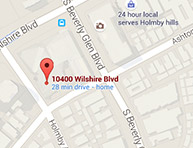This week’s Torah portion begins: “After the death of Aaron’s sons.” But Aaron’s sons died back in Leviticus 10. Now we are in Leviticus 16. After a long detour through laws of skin disease and impurity, the narrative resumes with a jolt—reopening Aaron’s wound—just as Moses is instructed to teach Aaron the ritual of Yom Kippur.
Why revisit Aaron’s grief before introducing the Temple ritual?
First, Aaron understands that even after heartbreak, life continues. This truth, bitter as it is, underlies the seudat havra’ah, the mourner’s first meal after burial. The mourner often doesn’t wish to eat, but the meal marks a boundary: yes, my loved one has died, but I have not. I must live in spite of the agony of loss.
Second, Yom Kippur enables all of Israel to repent. In other words, Aaron is told it is ultimately not only about him. Grief feels singular, but it is not solitary. Others have journeys that matter as well.
Grief is egocentric. Pain shrinks the world to a single point. Stub your toe, and for a moment, it blots out everything else. In loss, that flash becomes a lasting condition. God’s command gently reorients Aaron – “There is pain beyond yours, and people depend on you.”
Moreover, the kind of task is important. Yom Kippur is about sin and suffering and death and repentance and rebirth. In guiding the nation through its own reckoning, Aaron finds his. He stands with Israel in their sorrow, and thus finds footing in his own.
This wisdom is contained in the words we speak to the mourner in the house of shiva – “May God comfort you among the mourners of Zion and Jerusalem.” Our first thought may be – why do I need to hear about the mourners of Zion? Yet to know one’s grief is shared is both a comfort and the beginning of the wisdom needed to return to life.
The pain of loss does not vanish. As with all of us, for Aaron, there is a wound that never entirely heals. But he is able to continue, to contribute and to lead, so that when Aaron himself dies, “all of Israel mourned” (Numbers 20:29).”


